#popular chicken dishes at restaurants
Explore tagged Tumblr posts
Text
#Indian dishes#Indian food#popular Indian foods#traditional Indian food#traditional Indian dishes#salty foods in India#India's national dish#indian restaurant#Regional Cuisines#Street Foods#Festive Foods#Food Culture#indian food near me#indian restaurant near me#indian food restaurant near me#indian food close to me#indian cuisine restaurants near me#food indian near me#indian foods#biryanis#saravanaa bhavan#west indian food near me#indian near me#indian buffet near me#butter chicken dish#indian food chicken masala#indian cuisine food#indian cuisine buffet near me
0 notes
Text
Offal, aka organ meats, are about to make a comeback. Yes, I predict that brains, livers, spleens, tongues and testicles will feature heavily on the menus of Israel’s (and the diaspora’s Jewish/Israeli-style) hottest eateries by this time next year — if they aren’t already. Why? Because young chefs are increasingly inspired by traditional Jewish dishes, driving a return-to-roots style of cooking. And these old-school classics are notably innard-heavy.
Offal is an oxymoron; it’s both a poor-person food, which is why it was so popular in the shtetl, and a celebratory food, eaten on Shabbat and festivals. Many Sephardic cultures consider it a delicacy. Read on and decide for yourself.
Let’s start with an old Ashkenazi classic: chopped liver. While for me, it will always be in style, many of my contemporaries don’t feel the same. Luckily, young Jewish chefs have already set their sights on it, and may well have the power to convert millennial diners. Take Anthony Rose’s recipe in “The Last Schmaltz,” which sears the livers, then deglazes the pan with arak before blending, serving the chopped liver with thyme-scented caramelized onions.
Another well-known offal dish is the Jerusalem mixed grill. Made with chicken giblets and lamb parts, and seasoned with onion, garlic, black pepper, cumin, turmeric and coriander, this classic street food is believed to have originated sometime between 1960-1970 at one of two (now feuding) restaurants in Jerusalem’s Machaneh Yehuda Market. While the Jerusalem grill is far younger than most Jewish offal dishes, it originated in a similar way: Butchers had a surplus of unwanted offal so they sold it off cheaply, then some savvy chefs turned the offal into a desirable dish. The mixed grill was one of the first offal dishes to receive multiple modern makeovers. At his restaurant Rovi, Yotam Ottolenghi adds baharat onions and pickles, while Michael Solomonov included a Jerusalem grill-Southern dirty rice hybrid in “Israeli Soul.“
Of course, this is not the first dish based around grilled offal; Tunisian Jews liked to throw a selection of lamb or veal innards onto the grill, which they called mechoui d’abats, and Baghdadi Jews sought a similar smokiness, which they achieved by cooking chicken livers on the tandoor.
Roman Jews preferred their offal battered and fried, rather than grilled. Few know that their famed carciofi alla giudia (deep-fried artichokes) was often served alongside fried sweetbreads, livers, and — most notably — brains. North Africa’s Sephardi communities loved their brains, too, commonly serving them in an omelet called a meguina or menina on festive occasions. Meir Adoni referenced this love in his brain fricassee — a North African-French fusion dish of veal brains inside a croissant with harissa and preserved lemon — at his New York restaurant Nur.
Offal was also commonly used to add a depth of flavor to a soup or stew. Yemenite Jews — one of the few communities who continue to cook traditional offal dishes — make a soup with bulls’ penis and cows’ udders, while Eastern European Jews, particularly of Polish descent, continue to add kishke — a sausage made of stuffed beef intestine — to their weekly Shabbat cholent. A slow-cooked stew called akod is one of the better-known dishes of Tunisian Jewish cuisine, where tripe flavored with cumin, garlic, harissa and tomato paste is the star of the show. Moroccan Jews eat a similar dish on Passover, which ditches the tomato paste but adds liver, heart, and beef dumplings.
Admittedly, there are some offal-based dishes that may find it trickier to stage a comeback. Ptcha – an aspic that reached its height of popularity in shtetl-era Ashkenazi communities — is arguably top of the list. However, it’s not without hope; ptcha was actually born in Turkey in the 14th century as a peasant soup made with lamb’s feet, served hot. This, I’d wager, is a more palatable gateway (it’s basically bone broth) to the Eastern European version, which opts for calves’ feet and allows the soup to cool and set into a jelly, thanks to the gelatin in the hooves.
It only takes one dish to change your view of offal from weird and unappetizing to tasty and versatile. If livers, brains and tripe were good enough for our ancestors, not to mention famed chefs, who are we to turn up our noses? Happy eating!
85 notes
·
View notes
Text
Thinking About QL Fandoms and Markets For Indian Queer Media
Alright, ::rubs hands together::, let's see if this old auntie can get the link history of this thread straight first.
@impala124 originally wrote in an ask to dear @lurkingshan about Shan's thoughts on a developing fandom for Indian queer media.
Shan subsequently asked a few of us on the internet, brown Asian and/or otherwise, to weigh in, which @starryalpacasstuff did here. Starry's piece has a few great reblogs with media resources that everyone should scurry to check out.
The inimitable @neuroticbookworm then decided to show us her literary Tae Bo skills and dropped an absolute MONSTER of a must-read regional media and industry analysis here. (Let me emphasize that this is a MUST-READ PIECE if you're interested in Indian media.)
I'm going to use NBW's piece as a reference throughout my weak-ass response tea here, because she covered almost everything that needed to be said about why there ISN'T a robust or developed fandom on the internet for Indian queer media. So go read that first, and if you forget to click back here, it's all good, because I'm just gonna offer some unorganized macro-level thoughts at this point.
****
I'd like to first amplify a number of themes that @neuroticbookworm made clear in her piece about the "media industry in India." I'm only putting that phrase in quotes not because NBW wrote it (she didn't), but because it's a wholly inaccurate phrase.
1) INDIA IS *NOT* A SINGLE, UNIFIED CULTURAL MONOLITH. Remember your early social studies classes on early civilizations? The Aryans, Harappa, Mohenjo Daro? Those specific civilizations arose in the north of the Indian sub-continent, and not a lot of social studies spaces outside of Indian classrooms give love to the other regional areas in India -- like, say, all of South India, hello -- that belong to other civilization definitions.
To be grossly overgeneral, ancient civilizations in the northern subcontinent were known as Aryan civilizations, while those of the southern subcontinent were known as Dravidian civilizations. We see these differences today in the food we brown people eat, and ESPECIALLY in the languages we speak. Tamil (a Dravidian South Indian language) couldn't be farther away from Hindi (a North Indian language emanating from Sanskrit).
2) While the prominent political nationalists of India (😐) would like to have you believe that all Indians are monolithically similar -- or rather, SHOULD be monolithically similar by way of all Indians speaking Hindi, consuming Hindi media, and erasing religious diversity (🤬) -- nothing could be farther from the truth of our incredibly diverse and complicated subcontinent. We Indians are regionally, and therefore culturally, diverse in a great myriad of ways, way beyond our food, language, and religious preferences.
[For my non-Indians and non-Asians reading this, think about the two dishes you see the most on Indian restaurant menus outside of India. Chicken tikka masala and tandoori chicken, right? That's typical "Indian" food to the untrained eye. CTM is a British dish borne from immigrant South Asian chefs; and tandoori chicken was created by North Indian Punjabis. My own Indian origins are half-half (lah), I'm half-South and half-North Indian (with some SE Asia thrown in there, boleh!). My brain fucking freezes when I speak to someone who thinks the extent of "Indian food" is CTM and TC, and I have to explain, for the millionth time, the basics of the incredible array of South Indian vegetarian food that I grew up eating and loving.]
Thus, what I'm trying to say is, when we say the word "INDIAN," there are some questions that a curious listener should be tuned into asking to get specifics about just what kind of "India" or "Indian" the speaker is speaking of. I'll often get the question, "but WHERE in India are your parents from," from tuned-in Asians, who want to know specifically about my regional background.
VERY SO OFTEN IN POPULAR DIALOGUE ABOUT "INDIAN MEDIA," THE UNDERLYING ASSUMPTION OF THE CONVERSATION IS THAT THE SPEAKER IS ONLY SPEAKING ABOUT HINDI-LANGUAGE MEDIA, WITHOUT RECOGNIZING THAT REGIONAL AND/OR NON-HINDI LANGUAGE MARKETS MIGHT BE MAKING MEDIA, EVEN POPULAR MEDIA, FOR THEIR SPECIFIC REGIONAL MARKETS AND AUDIENCES WITHOUT AS MUCH OF A GLANCE TO THE DOMINANT HINDI-SPEAKING NORTH.
NBW says this brilliantly in her incredible piece, which delineates the major differences in the MANY regional and even sub-regional media markets of India, that produce a VAST array of media in the languages of the regions, markets, and audiences that this media serves.
On a personal note, when I was a kid, I only watched old South Indian films subtitled in English that my South Indian dad found. My North Indian mom watched them with us happily. We didn't do Bollywood in my house because frankly, dad hated those films and wasn't into them. Now that I think about it, it's probably because those Hindi films didn't bear a single resemblance to the cultural and life he lived growing up in South India.
3) Alright, so we have established that in terms of media, to speak about "Indian media" as a monolith is utterly incorrect, and just, go back to NBW's piece to get an excellent analysis of the details of that situation.
NBW does a bang-up job highlighting important pieces of regional media throughout her post, and like I mentioned before, there are multiple lists of media in the reblogs Starry's piece linked above ( @silverquillsideas notes in her reblog of Starry's piece that two important films come out of the state of Bengal, a market that us Indians should certainly pay attention to in particular.)
I therefore might posit that there might not actually be a unified "fandom for Indian queer media."
IT IS CLEAR from the reblogs of the various pieces that we've written over the last few days, that us Indians who love QLs certainly don't INHERENTLY know, universally, about ALL the queer media, across the subcontinent, in the MANY languages we speak, that has been made.
We have a lot of learning to do across our own regional identities.
I'd argue that, instead, from an organic growth perspective, that regional media markets in India would respond to THEIR OWN AUDIENCE'S AND MARKET'S DEMANDS and create queer media WITHIN THEIR OWN REGIONS
a) if their market(s) demanded it, AND b) if there was either pre-production funding, or a guarantee of net revenue from the airing of such media.
A fandom doth not create media.
It is filmmakers that create media.
And those filmmakers need
✨ MONEY ✨
✨ MONEY ✨
✨ MONEY ✨
to make media.
Some regional markets will, by nature, be willing to take risks on a filmmaker's desire to make queer media. Those projects could succeed, or could fail. Badhaai Do is one of the best examples of a Bollywood breakout piece that gained even some international attention, and certainly attention ACROSS the subcontinent.
But I want to emphasize this point about
MONEY.
The question that we're pondering is, why isn't there a more prominent fandom for Indian queer media and/or QLs?
@twig-tea made note, in her reblog of Starry's original piece, about the importance of accessibility and subtitling, an important note not just for international audiences, but for regional Indian populations that don't speak the same language(s). Accessibility allows fans to watch the media of their own markets, and markets outside of their boundaries.
But even bigger than this is, before we even get into accessibility, is: the filmmakers need money to spend to MAKE projects, and in an ideal scenario for themselves and/or their studios, they then need to (hopefully) make a PROFIT to demonstrate a sustainable desire and demand for the media they're producing, a profit that could hopefully be re-invested into more and new queer media projects.
Let me not get into all the obstacles in which filmmakers, queer or otherwise, might run into issues with production fundraising for a queer-centered project. We Indians know about our conservative, often violent, obstacles.
NBW does a fabulous job in her piece discussing what COULD be made by way of queer media that COULD gain a stronger cultural foothold over time across the subcontinent.
4) A fandom, most often, develops as a response to media already created. A fandom, HOWEVER, *IS*, often, in today's digital age, often recruited to fundraise for projects they want to see! GoFundMe, right?
I think it was @impala124 in a reblog that mentioned that there's already a "market" for Indian QLs. But we've established now that there are actually many unconnected regional media markets in India that can't be assumed to be glommed together.
If a fandom WANTS to see a particular kind of media, in their own specific regional market, it's certainly well within its rights of speech to create internet buzz for it.
But I think we as fans also need to take responsibility for a better understanding of the economics of media creation, and to be patient as queer media is produced across the subcontinent, and to simply do our best to hype it up on the internet when we can, so that commercial sponsors and potential production funders can then pay attention to what us fans want -- and what we're willing to pay for.
And let me be honest, this is a *tremendously difficult proposition* for a field of media that's just really small against the giant, mainstream, well-funded media markets of India. And this field of queer media would be guaranteed to face crippling and disgusting conservative criticism as it gains more of a prominent cultural foothold -- as we are seeing in South Korea literally at this very second.
Looking on the economic bright side: we see in Thailand and in Japan that QLs make MONEY. Shit, not just Japan being into Japanese QLs, but also, Japan is so into Thai QLs that the major Thai channel and studio, GMMTV, has a distribution deal with the Japanese channel TV Asahi to air Thai QLs in Japan. MONEY, BABY! INTERNATIONAL DOLLAS. Great Sapol, of the QLs Manner of Death and Wandee Goodday, just wrapped a stint in a mainstream Japanese drama, and I'll assume that's because he's hotttt and talented gotten a lot of attention in Japan from his previous Thai QL work, as well as his lengthy resume in Thai mainstream media.
The hunger for QLs is there in these two major national markets, and the Thai and Japanese audience markets have proven that the demand for content for these countries can be economically fruitful. So the media markets of these two (much smaller than India) countries are pumping ever more money into production, and filmmakers are responding with more QL content than ever.
We have not even begun to contemplate reaching that tipping point in India, across our regional markets, yet. Again, NBW offers some creative paths forward that will take time to develop.
Fuck, I mean. Imagine Bollywood looking towards Thailand and its branded pair formula as an inspiration to develop queer media. (IMAGINE.) Get two super popular Bollywood actors together in a branded acting coupling/partnership. Shah Rukh Khan and Saif Ali Khan doing India's version of What Did You Eat Yesterday?. In aprons! Making keema and rajma and chapatis. ShahSaif (SaifShah?!). KhanKhan. How would that go down?
It's a proven economic formula in Thailand. And that's just one example. We're well familiar, separately, with how Japanese QLs gain traction in bigger media spaces for its audiences, with media being adopted for the screen, as they mostly are, from popular yaoi and yuri mangas.
India and its regional media markets need some proven economic formulas within its regional markets to prove that queer media can gain culturally important footholds across the mindsets of various audiences -- and to prove that those footholds can produce profits.
The fandom element in this is that the regional fandoms, while creating buzz, could also prove to be important economic factors to a regional queer media industry being able to survive, and maybe even thrive.
Assuming that I am speaking to a mostly progressive group of fans here: we can only hope for this, and we must support the queer media that the subcontinent currently produces, IN *ALL* THE LANGUAGES (!!!!), to demonstrate to producers that Indians, wider South Asians, and even non-South Asians, WANT THIS MEDIA. We want it, we SHOULD want it, and damn it, we should SPEND OUR MONEY on it, to show our appreciate to the filmmakers taking risks to make this media.
I'm out! I need a chai and a samosa and a dosa.
#indian media#indian queer media#indian ql#bl industry#fandom#fandom things#fandom meta#khankhan#MAKE IT HAPPEN
53 notes
·
View notes
Text
I love the way Crash Course in Romance explored class in its 8th episode! It’s subtle enough to go almost unnoticed for now but the fact that Chi Yeol had to chose between the piano recital and the chicken party leaves no doubt that it’s written like that on purpose. Chi Yeol is the star of the academy, he’s super popular, crazy rich, and is expected to date people from a high rank like the pianist he went on a blind date with. It’s not like he enjoys this life, it literally makes him sick, but that’s just what is expected of him. To get closer to Haeng Seon, he has to ditch this lifestyle. I feel like this is what episode 8 was about, telling it mostly through food.
Haeng Seon’s food an obvious part of this. She’s a cook but she sells ordinary side dishes. When she sees Chi Yeol in front of the store, Sua’s mom even says she "expected him to have a more sophisticated palate" because it’s not fancy enough for rich people like them. So when he suggests having a party to the family, he invites them to a western gourmet restaurant. Very far from the party they had at home to celebrate Hae Yi’s perfect grade in math in the previous episode... The family feels awkward, out of place, in this fancy and cold restaurant. When Chi Yeol asks to have every course served at the same time, it feels like home again. They speak again, eat big bites of food and food goes from one plate to another. The table was so big for the four of them before, now it feels like it got smaller and they sit closer to each other.
Fancy food like the one from that restaurant or like the snacks gifted by the pianist are great, they make you feel good. It’s new, different, it’s expensive. You want to get it from time to time. But what fills you up is basic, familial food, like Haeng Seon’s. It’s what makes you healthy, what comforts you when you need it. It’s the food you share with your loved ones or those who need it. It's the recipes you get from your mother. Chi Yeol thought he could only stomach Haeng Seon’s food but he ate without problem chicken she didn’t cook because it’s not just her cooking he needs but people to eat with. A family.
#crash course in romance#omg i didn't think it'd be so long#i had more stuff to say but it feels like it would be endless so i'll leave it at that lmao#honestly i love the way food is portrayed in fiction#and i hated blue is the warmest color but#it's probably the movie that sparked that interest#because it showed class differences through food and it stuck with me#also i feel like what im saying here sounds super obvious#but i just love the way ccir explores food#and makes it a major theme#.txt#commentary
587 notes
·
View notes
Text
Breakfast foods in China
Since arriving in China my typical breakfast has changed quite a lot (hello baozi and mung bean paste!) so I decided to explore some common local breakfast foods eaten in China!
包子 - Bāozi (my love) These have been an almost consistent (excluding the lunar new year when the canteens and most cafes and restaurants closed) staple of my breakfast ever since I arrived in China. They come with several fillings such as veggie, pork, seafood etc. and they can cooked in different ways such as being steamed, fried etc. Here's a more in-depth post about the types of dumplings and bāo.
粥 - Porridge (zhōu) I sometimes have porridge for lunch instead and it's a really filling meal. I get the Century Egg Congee with Chicken - 皮蛋瘦肉粥 (Pídàn shòu ròu zhōu) and it's one of my all time favourite meals.
��饼 - Egg pancake (jiānbing) Popular also as a street food, this is a thin crepe type pancake with an egg, veggie, spice, sauce and sometimes meat filling. The actual filling varies as you can customize what veggies and spice level you'd like and whether or not you want meat.
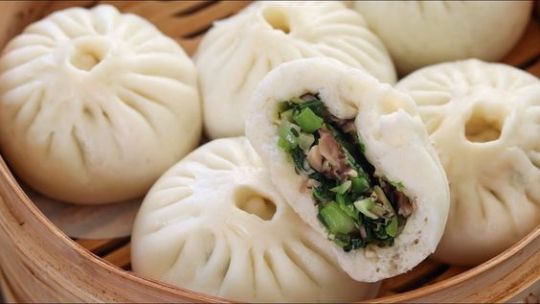


热干面 - Hot and dry noodles (règānmiàn) I honestly had no idea about this dishes existence until a while ago, probably because it's a regional dish originating from Wuhan which is kind of far away from my location. These are spicy and dried noodles which are actually eaten without a broth unlike many other noodles. They seem pretty interesting so if anyone tried them before do share your experience!
桂林米粉 - Guilin Rice noodles (guìlín mĭfĕn) This appears to be another regional dish from Guilin, Guanxi as I had no idea that this was a also a pretty popular breakfast dish. Apparently it's not the noodles but rather the broth that they're cooked in that makes them special, with the actual recepie varying across the region. Someone should do a long weekend trip vlog (pondering on this) to Guilin where they just go from store to store trying these noodles and trying to determine the differences.
葱油饼 - Scallion oil pancake (cōngyŏubĭng) A tasty but heavy-ish pancake imo. These pancakes are cooked with scallions (green onion) and pan-fried to give it that crispy and chewy texture. Very tasty, but it's a little too heavy on the oil for me so I save these pancakes for special occasions instead.

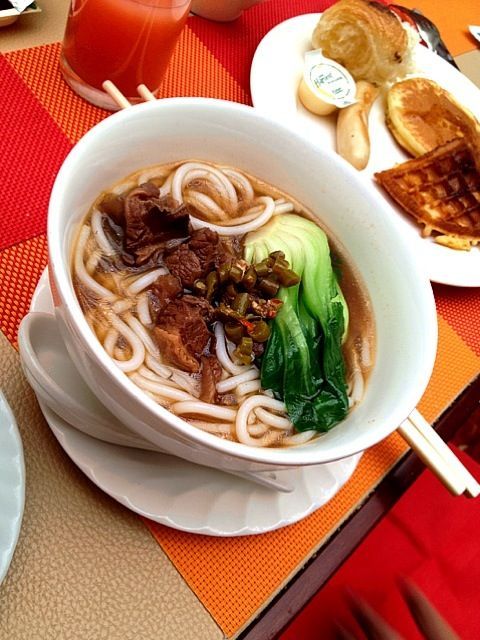
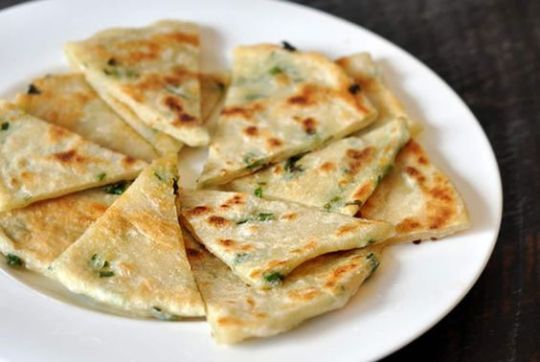
豆浆油条 - Soy milk and deep-fried dough sticks (dòujiāng yóutiáo) I have tried the dough sticks, and I have tried soya milk but separately so far. The dough sticks are these long deep-friend dough sticks, reminding me slightly of breadsticks but more lighter and chewier.
茶鸡蛋 - Tea eggs (chájīdàn) I adore these, my canteen serves them along with regular eggs for breakfast and the tea eggs are usually the first to go. They actually don't really involve tea, instead these eggs are cooked in a mixture of chinese five-spice powder (pepper, cloves, cinnamon, star anise and fennel seeds), soy sauce, and black tea leaves, although some recipes leave out the tea leaves. They have a relatively strong smell so I usually grab some for breakfast on the weekends or in the canteen at lunch if there are any leftover after breakfast. They are also quite cheap, one egg is around 2 yuan so around 0.30 euro, making them a pretty filling and affordable breakfast food.
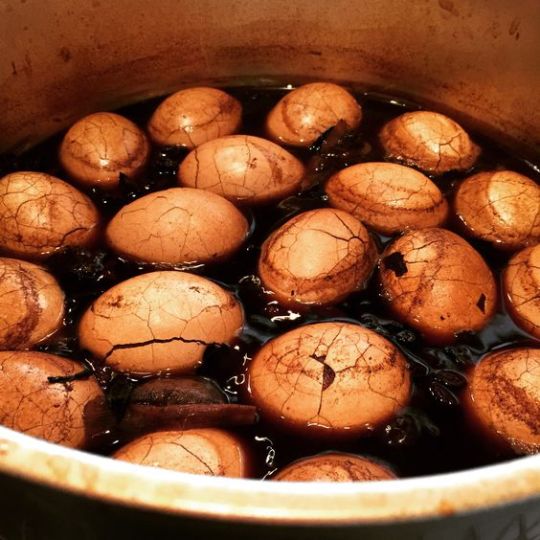
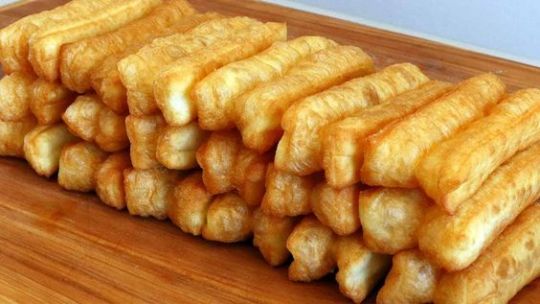
If there are any other common or specific breakfast foods that you know of, do share them please as I love trying out new things!
#chinese food#studyblr#college life#student life#study blog#life in china#aesthetic#student#study motivation#travel blog#china#study in china#college#slavic roots western mind#asia#chinese#asian food#baozi#cuisine#food#foodpics#dumplings#breakfast food#breakfast food in china#pancakes#tea eggs#porridge#congee#noodles#this is slowly turning into a food blod and im okay with it
99 notes
·
View notes
Text
Riverside Code at Qingming Festival (清明上河图密码) : Food
Many of the Chinese dishes enjoyed today originated, were invented, or became popular during Song Dynasty, even though some of the names were changed over time. For example, back then "Mantou" referred to what we call "Bao" today: aka Steamed buns with fillings. But nowadays we only call buns without fillings mantou. Wonton was called "Guduo".
Morever the 4 iconic chinese cooking methods; pan-frying, stir-frying, boiling and deep-frying, all became widely used in the Song dynasty.
-Ep 24 Song Dynastypedia
.
Plum Blossom "Soup Cake" Noodles

The recipe for this comes from Shan Jia Qing Gong by Lin Hong in Song Dynasty. White plum juice is mixed with flour, the dough is cut using a plum mould, cooked in water and served in chicken soup. This dish was featured in Cdrama Royal Feast too.
.
Pure Bliss on the Tip of Your Tongue Series
Niu Lane's Pork Skewers and Wine (was also featured in Royal Feast, you can find here and here)
Recommended by: Zhao Buyou
Reason for recommendation: Long established shop with great reputation. Fresh and delicious with wine
Note: It may bring back memories so please think twice before eating!
Fish Paste Stuffed Lotus Pods (a recipe featured in Shan jia qing gong mentioned before, also featured in Royal Feast here and here. Usually it uses real Lotus pods, here it's made with dough so you can eat the entire thing.)
Recommended by: Wen Yue
Reason: Uses ingredients that available all year round, soft and delicious, sweet but not greasy
Note: An approved license is a must for litigators!
Tripe Skewers, Steamed Bones
Recommended by: Gu Zhen
Reason: Crisp and golden, tender and juicy, Kaifeng Prefecture's first choice for a feast
Note: The eating environment is pleasant, but please do not touch the pine tree in the courtyard!



Guduo at the Gate of Dalisi
Recommended by: Wanfu
Reason: The skin is thin, the filling is tender, the soup is delicious, the color is refreshing, the boss is good-looking
Note: The portion is not large, need six bowls to make you full!!!!
Wu family Mantou
Recommended by: Zhao Ban'er
Reason: Mantou Xishi's [西施 Xī Shī (c. 450 BC), famous Chinese beauty, foremost of the Four legendary beauties, the name here basically means "The Beauty Who Makes Buns"] exclusive secret recipe. Collect coupons to redeem bamboo shoot and meat steamed buns.
Note: Business is booming, so the queue is long!!
Sun Yangzheng Store's (this is a real big name restaurant that existed back then, see the link) Family Package
Recommended by: Xiao Yishui
Reason: Beautiful packaging, door-to-door delivery, excellent service attitude
Note: Eating unknown delivery can be risky, you better take photos before tucking in so you can get refunds!



.
Reunion Meal: A Lifetime With You
Zhao Buyou: "You"dunzi Pancake, Zhao Mo'er: "Mo"yu Cuttlefish


Zhao Ban'er: Stir-fried Duck with Dou"ban" Sauce, Zhao Li: Fengqi"li" Pears, Rainbow Bridge Over the Bright Moon



.
Riverside Code at Qingming Festival ( 清明上河图密码 ) : Qīngmíng shànghé tú mìmǎ Cultural Meta Masterpost
#cdrama#chinese drama#chinese history#chinese food#Riverside Code at Qingming Festival#清明上河图密码#mantou#wonton#douban jiang#youdunzi#pork skewers#fengqili pears
14 notes
·
View notes
Text

The American English expression "fried chicken" was first recorded in the 1830s, and frequently appears in American cookbooks of the 1860s and 1870s. The origin of fried chicken in the southern states of America has been traced to precedents in Scottish and West African cuisine. Scottish fried chicken was cooked in fat, and West African fried chicken added different seasonings,and was battered and cooked in palm oil. Scottish frying techniques and African seasoning techniques were used in the American South by enslaved Africans
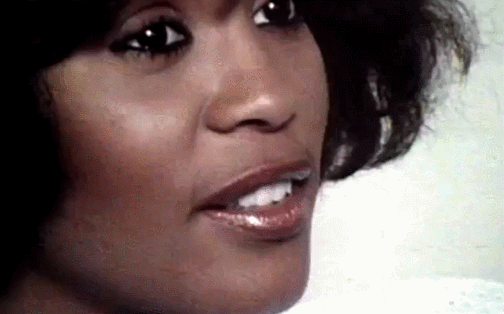
Fried chicken provided some means of an independent economy for enslaved and segregated African-American women, who became noted sellers of poultry (live or cooked) as early as the 1730s.Because of the expensive nature of the ingredients, it was, despite popular belief, a rare dish in the African-American community reserved (as in Africa) for special occasions.When it was introduced to the American South, fried chicken became a common staple. Later, as the slave trade led to Africans being brought to work on southern plantations, the enslaved people who became cooks incorporated seasonings and spices that were absent in traditional Scottish cuisine, enriching the flavor. Since most enslaved people were unable to raise expensive meats, but were generally allowed to keep chickens, frying chicken on special occasions continued in the African-American communities of the South, especially in the periods of segregationthat closed off most restaurants to the African population

American-style fried chicken gradually passed into everyday use as a general Southern dish, especially after the abolition of slavery, and its popularity spread. Since fried chicken traveled well in hot weather before refrigeration was commonplace and industry growth reduced its cost, it gained further favor across the South. Fried chicken continues to be among this region's top choices for "Sunday dinner". Holidays such as Independence Day and other gatherings often feature this dish. During the 20th century, chain restaurants focused on fried chicken began among the boom in the fast food industry. Brands such as Kentucky Fried Chicken (KFC) and Popeyes expanded in the United States and across the world.

#african#afrakan#kemetic dreams#africans#brownskin#afrakans#brown skin#african culture#african food#african cuisine#fried chicken'cjicken#doro#kentucky fried chicken#popeyes#abolition of slavery#south#united states#africa#scottish#1730s#slave trade
92 notes
·
View notes
Text

Tandoori chicken or tandoori murgh is one of the most popular dishes in Indian cuisine, its name derived from the Persian word tannur, meaning fire. The dish consists of chicken meat that is marinated in yogurt, seasoned with tandoori masala, nutmeg, and cumin, then placed on skewers. It is a unique dish because of the way it is prepared - traditionally, it is cooked at high temperatures in cylindrical clay ovens called tandoor, resulting in succulent meat with a smokey flavor. One popular theory suggests that it was invented by a man named Kundan Lal Gujral in his restaurant Moti Mahal (Palace of Pearls). He wanted to make a new dish, so he tried cooking the chicken in the tandoor, which was mostly used for baking the famous Indian bread called naan. The dish was an instant hit with the hungry customers, and the crispy, yet succulent chicken dish even caught the attention of Indian Prime Minister Jawaharial Nehru, who often ate at the restaurant and made it a regular dish at official banquets. The aforementioned theory belongs to the recent past, but historians claim that tandoor-cooked chicken actually dates back to the Mughal period, when the dish was merely a part of gigantic Indian feasts at the time. Tandoori chicken's fame led to many derivatives such as chicken tikka masala and butter chicken, both of them commonly found in restaurants across the country. src.: https://www.tasteatlas.com/tandoori-chicken photo ref.: Dotdash Meredith Food Studios
14 notes
·
View notes
Note
Hiii! I was wondering if you’d do a kitchen nightmares oneshot, maybe where the reader is a waitress at a failing restaurant and she’s super sweet so gordon immediately takes a liking to her but she’s treated terribly by her boss. Maybe her boss is yelling at her and gordon comes to her defense, sort of hurt/comfort. (I really hope this makes sense 😖)

A/N: Am I crazy to write about Gordon?
Title: Under Fire in the Kitchen
Summary: When celebrity chef Gordon Ramsay steps into a struggling restaurant, he discovers more than bad food—he finds a waitress with a heart of gold and a toxic boss in need of a wake-up call.
Pairing: Gordon Ramsay × Reader
Tags: Conflict.
The small, dimly lit restaurant had seen better days. The tables were scratched, the menus sticky, and the air carried the faint scent of desperation mixed with grease. You had been working here for a year now, trying your best to bring a little kindness to the weary customers who still trickled in. But it wasn’t easy—not with a boss like Dan, whose temper was as short as the restaurant’s dwindling finances.
When Gordon Ramsay swept through the doors for his first visit, his piercing blue eyes took in every detail with a sharpness that made everyone—including you—stand a little straighter. He barked orders, questioned decisions, and tore apart the menu with his usual fervor. But when he spoke to you, his tone softened, his voice dipping into a low warmth that caught you off guard.
“What’s your name, love?” he asked, tilting his blond head as he studied you.
You told him, your voice hesitant under his intense gaze.
“Well, you’re the first bloody smile I’ve seen in this place,” he said, his lips twitching into a grin. “At least someone here knows how to treat a customer.”
His words sent a warmth through you, a small smile tugging at your lips as you guided him to a table near the back of the restaurant, away from the louder, busier section. “I’ll take your order,” you said softly, trying not to let the slight tremor in your voice betray the nervous energy buzzing beneath your skin.
Gordon’s piercing blue eyes stayed fixed on you as he sat down, his expression softening but still sharp enough to make you feel like he was peeling back your layers. “So, love,” he said, his voice dropping into a low, almost conspiratorial tone, “what’s the story here? What’s keeping this place afloat—besides your smile?”
You laughed quietly, glancing briefly toward the cameras mounted in the corners of the room. You’d almost forgotten about them in the flurry of his arrival. “Dan’s both the owner and head chef,” you explained, keeping your tone professional but warm. “He’s… passionate about what he does. But it’s been hard. Business has been slow, and—” You hesitated, carefully choosing your words. “Let’s just say, morale could be better.”
Gordon nodded, his sharp jawline tightening slightly as he listened. “Head chef and owner, eh?” he muttered, glancing toward the kitchen doors. “That’s usually where the problems start.”
You shifted awkwardly, unwilling to badmouth Dan but unable to deny the truth in Gordon’s observation. “He tries,” you offered diplomatically. “But it’s been overwhelming. We’re all hoping you can help turn things around.”
His lips quirked into a faint smile as he picked up the sticky menu, his long fingers skimming over the laminated pages. “Let’s see what we’re working with, then. What’s the most popular dish here? Or… what do you think is the most popular?”
You leaned slightly closer, lowering your voice as you pointed to an item on the menu. “The chicken Alfredo gets ordered the most. It’s… not terrible, but it’s heavy, and the sauce tends to separate if it sits too long.”
Gordon let out a low chuckle, his blue eyes flicking up to meet yours. “Not terrible,” he repeated, the faintest trace of amusement in his voice. “That’s a glowing endorsement if I’ve ever heard one.”
You blushed slightly, unable to help the small smile that tugged at your lips. “I guess I’m just being honest. But you’ll see for yourself.”
He leaned back in his chair, folding his arms across his chest as he studied you for a moment. “You’re a rare one,” he said, his tone softening. “Most people in your position would be running for the hills, but you actually care about this place.”
“It’s not just the restaurant,” you replied, meeting his gaze. “It’s the people. The customers, the staff… even Dan. I want this to work—for all of them.”
Gordon’s expression shifted, his usual intensity giving way to something warmer, almost fond. “You’ve got a good heart, love,” he said quietly. “Let’s hope the food can match it.”
The sound of plates clattering in the kitchen broke the moment, and you straightened, suddenly hyper-aware of the cameras. “I’ll get that order in,” you said, stepping back toward the kitchen.
As you turned, you heard Gordon mutter under his breath, just loud enough for you to catch. “Beautiful and kind. Bloody hell, what a combination.”
You smiled to yourself, your heart racing slightly as you pushed through the swinging kitchen doors. He might have been the fiery, no-nonsense chef the world knew and feared, but there was a charm to him—a warmth beneath the surface—that left you feeling flustered in the best possible way. But for now, you reminded yourself, you had a job to do. And if anyone could save this place, it was Gordon Ramsay.
○○○○○○○○○○○
The dinner rush had started as a steady trickle but quickly turned into a chaotic flood, the kitchen barely able to keep up. The orders came in fast, and the tension in the air was thick enough to cut with a knife. You moved quickly and efficiently, balancing plates and drinks with practiced ease, even as Dan’s voice bellowed orders from the kitchen.
Gordon Ramsay stood in the corner, arms crossed and blue eyes sharp, silently observing the madness. His presence alone was enough to keep everyone on edge, though his focus was clearly on assessing every crack in the restaurant’s foundation.
By the time the third dish of the night was returned—a soggy, undercooked lasagna—you could feel the frustration radiating from the kitchen like a heatwave. With a deep breath, you carried the plate back to Dan, carefully placing it on the counter.
“What the hell is this?” Dan snarled, his face red as he gestured wildly at the dish. “Are you trying to ruin me?”
“It was sent back,” you said gently, trying to maintain your professionalism. “The customer said it’s undercooked—”
“Of course, they said that!” Dan snapped, slamming his fist on the counter. “Because you probably sold it wrong! God, you’re useless sometimes!”
You flinched at the venom in his voice, your hands tightening around the tray you carried. “I didn’t sell anything wrong, Dan,” you replied quietly, but firmly. “I’m just doing my job.”
“Oh, doing your job, are you?” he sneered, stepping closer. “You call this doing your job? You’re standing out there smiling like an idiot while I’m back here trying to keep this place afloat!”
The kitchen fell silent. Every chef and line cook froze, their eyes darting between you and Dan. And then, out of the corner of your eye, you saw Gordon move.
“That’s enough,” Gordon said, his voice low and cutting as he stepped forward. His blue eyes blazed with fury, the authority in his tone making even Dan shrink back slightly. “What the bloody hell do you think you’re doing?”
Dan opened his mouth to respond, but Gordon cut him off with a sharp gesture. “No, don’t speak. I’ve stood here all night, watching you run this place into the ground, and now you’re blaming her for your mistakes? Are you joking?”
Dan spluttered, his confidence faltering under Gordon’s intense glare. “I—I’m just trying to keep things running—”
“By screaming at the one person who’s been holding this place together?” Gordon’s voice rose, sharp and commanding. He turned to you, his expression softening slightly. “Go outside, love. Take a breath. I’ll handle this.”
You hesitated, glancing between Gordon and Dan, but the quiet encouragement in Gordon’s gaze gave you the strength to nod. As you pushed through the kitchen doors, the cameraman followed, the sound of Gordon’s booming voice trailing behind you.
Once outside, the cool night air hit your flushed cheeks, and you exhaled shakily, leaning against the brick wall. Moments later, the door swung open, and Gordon stepped out, his tall frame towering over you as he approached.
“Hey,” he said softly, his usual gruffness tempered by concern. “Are you alright?”
You nodded, though your trembling hands betrayed you. “I’m fine. It’s just… it’s hard sometimes. I care about this place, but Dan—he’s so angry all the time, and I just—” Your voice broke, and you quickly looked away, blinking back tears.
Gordon moved closer, his hand coming to rest gently on your shoulder. “You don’t deserve that,” he said firmly, his blue eyes locking onto yours. “You’re the only one in there who’s giving a damn about this place. Without you, it’d already be sunk.”
His words brought a lump to your throat, and you managed a weak smile. “Thank you. That means a lot.”
He chuckled softly, his hand sliding down to briefly squeeze your arm. “I mean it, love. You’re the heart of that restaurant, and it’s about bloody time someone acknowledged it.”
You felt a blush creep up your neck, and you quickly glanced away, aware of the cameraman lingering nearby. “I just… I want to believe this place can be better,” you murmured.
“It can be,” Gordon said, his voice dropping into a warm, reassuring tone. “But not with someone like Dan dragging it down. You’re better than this. Don’t let him make you feel like you’re not.”
You looked up at him, your eyes meeting his, and for a moment, the world seemed to fade away. There was something in the way he looked at you—something unspoken but undeniable. His hand lingered just a moment longer on your arm before he stepped back, breaking the spell.
“Come on,” he said, his tone lightening as he gestured toward the door. “Let’s get back in there. I’ve got a few words for your boss.”
You smiled faintly, your heart a little lighter as you followed him inside. Whatever happened next, you knew Gordon Ramsay was on your side—and for the first time in a long while, that gave you hope.
8 notes
·
View notes
Text
#Indian dishes#Indian food#popular Indian foods#traditional Indian food#traditional Indian dishes#salty foods in India#India's national dish#indian restaurant#indian food near me#indian restaurant near me#indian food restaurant near me#indian food close to me#indian cuisine restaurants near me#food indian near me#indian foods#biryanis#saravanaa bhavan#west indian food near me#indian near me#indian buffet near me#butter chicken dish#indian food chicken masala#indian cuisine food#indian cuisine buffet near me
0 notes
Text

The Double Date Disaster
🔷🔷🔷🔷🔷🔷🔷🔷🔷🔷🔷🔷🔷
Summary Your mother arranges a double date with Melissa and her husband, who spend the evening subtly trying to one-up you.
🔷🔷🔷🔷🔷🔷🔷🔷🔷🔷🔷🔷🔷🔷🔷🔷🔷🔷
“The Double Date Disaster”
The restaurant Melissa picked for the double date was upscale, all white tablecloths and softly glowing chandeliers. She’d been talking it up for weeks, boasting about how exclusive it was and how she and David were regulars. You’d tried to politely decline the invitation, but Melissa insisted, saying, “It’ll be fun! Just a casual evening out—nothing serious.”
From the moment you and Leon walked through the door, it was clear this was anything but casual.
The Entrance
Melissa was already seated at the best table, strategically positioned in the middle of the room where everyone could see her. David sat beside her, fiddling with his tie and looking vaguely uncomfortable.
“Finally!” Melissa exclaimed as you and Leon approached the table. “We’ve been waiting forever. Did you get lost?”
Leon, ever the gentleman, smiled smoothly. “No, but the valet line was a bit long. Seems like it’s a popular place.”
Melissa’s smile faltered slightly, but she recovered quickly. “Oh, yes, it’s very exclusive. David and I come here all the time. The chef knows us personally.”
You exchanged a glance with Leon, who raised an amused eyebrow. “Well, that’s impressive,” you said, pulling out your chair.
The Competition Begins
From the start, it was clear Melissa and David were trying to turn the evening into a competition.
“We’re planning a trip to Italy next year,” Melissa announced as the waiter poured water into your glasses. “We thought we’d treat ourselves to something extravagant. You know, since we deserve it.”
“That sounds lovely,” Leon replied politely, not missing a beat. “Y/N and I went to Greece last year. Beautiful place. The sunsets are incredible.”
Melissa’s smile tightened. “Oh, Greece. I suppose that’s nice too.”
David chimed in, eager to contribute. “We’ve been looking at buying a vacation home—something quaint, but, you know, luxurious. What about you two?”
“We don’t need a vacation home,” you replied, smiling sweetly. “Our cabin is perfect. It’s cozy, private, and exactly what we need.”
Leon added, “And it’s not just a vacation spot—it’s home. We’ve put a lot of work into making it ours.”
Your grandparents, who were seated at a nearby table with your parents, chuckled quietly. Clearly, they were enjoying the exchange.
The Meal
When the food arrived, Melissa launched into a detailed critique of the dishes, dropping phrases like “over-reduced sauce” and “improper plating.”
“You wouldn’t understand,” she said with a laugh. “Once you’ve dined here enough times, you develop a more refined palate.”
Leon glanced at his plate, then at yours, before turning to her with a small smile. “Refined palate or not, this steak is incredible. Y/N, how’s yours?”
“It’s perfect,” you said, taking a deliberate bite and making an exaggerated sound of satisfaction. “But maybe I’m just not sophisticated enough to notice anything wrong with it.”
Your grandmother laughed out loud at that, earning a sharp glance from your mother.
“Melissa’s just trying to educate you,” your mother said, clearly trying to salvage the moment.
“Really? Because it feels like she’s just trying to outdo us,” you said lightly, your tone carrying just enough sarcasm to make Melissa’s jaw tighten.
The Grandparents Chime In
As the evening went on, your grandparents became more openly amused by Melissa and David’s antics.
“You know,” your grandfather said loudly, leaning back in his chair, “I’ve been to a lot of fancy restaurants in my day, but nothing beats a good home-cooked meal. Y/N’s roast chicken, for example—now that’s a meal worth bragging about.”
Leon grinned, clearly enjoying the moment. “It’s true. She makes the best roast chicken I’ve ever had.”
Melissa’s face flushed, and she tried to steer the conversation back to herself. “Well, not everyone has time to cook elaborate meals. David and I are just so busy with our careers—”
“Careers?” your grandmother interrupted, her tone sharp. “Last I heard, David spends more time gaming than working. But maybe that’s just his way of relaxing after all those… PowerPoint presentations.”
David sputtered, and Melissa shot her a glare, but your grandparents were unfazed.
The Dessert Showdown
The Dessert Showdown (Continued)
By the time dessert arrived, Melissa was clearly running out of ways to dominate the conversation. As the waiter placed an assortment of beautifully crafted desserts on the table, she leaned forward with a sly smile.
“You know,” she began, “David and I are thinking of hosting a dinner party soon. Something small but elegant. Of course, we’ll use our extensive knowledge of fine dining to plan the menu.”
David nodded awkwardly, clearly unsure of what he was agreeing to. “Yeah, we… uh… love hosting.”
You couldn’t help but smile, raising an eyebrow. “That sounds… ambitious. I’m sure it’ll be memorable.”
Leon chuckled, leaning back in his chair. “Let us know if you need any tips. Y/N’s become quite the expert at planning events. Remember that charity gala she organized last month?”
Your grandmother’s eyes lit up. “Oh, that was a wonderful evening! You should’ve seen it, Melissa. Everything was perfect—so professional.”
Melissa’s smile tightened, her fingers gripping her dessert fork a little too tightly. “Well, we like to keep things more intimate. You know, less pressure.”
The Grandparents’ Final Blow
As the desserts were finished and the table quieted, your grandfather spoke up again, his voice carrying across the room.
“You know,” he said, gesturing with his fork, “it’s funny how people think they need to compete over everything these days. A real partnership isn’t about who can outdo the other—it’s about lifting each other up. That’s what I see in Y/N and Leon. They’re a team.”
Your grandmother nodded, her eyes twinkling. “Exactly. They remind me of us, don’t they?”
“Absolutely,” your grandfather replied with a grin. “Solid as a rock.”
Melissa opened her mouth to respond, but your grandmother cut her off with a pointed smile. “And as for these so-called dinner parties, maybe focus less on trying to impress people and more on making it meaningful. Otherwise, it’s just noise.”
David, who had been quietly sipping his coffee, nearly choked.
The Goodbye
As the bill was settled and the double date drew to a close, Melissa’s attempts at one-upmanship had clearly backfired. Your grandparents’ support, combined with Leon’s calm confidence and your quick wit, left her with little room to maneuver.
“Well, this was… fun,” Melissa said stiffly as everyone stood to leave.
Leon gave her a polite smile. “It was. Thanks for inviting us.”
David mumbled something under his breath, clearly eager to escape.
Your grandmother leaned in to hug you, whispering, “You handled yourself beautifully. She doesn’t know what to do with you now.”
You smiled, squeezing her hand. “Thanks, Grandma.”
As you and Leon walked to the car, he slid an arm around your waist, his voice low and amused. “You were incredible tonight. The way you handled Melissa? Flawless.”
“I learned from the best,” you teased, leaning into him.
“Team effort,” he replied with a grin. “But I think we won this round.”
And as the cool night air filled your lungs, you couldn’t help but feel a quiet sense of victory. Melissa might have tried to outshine you, but with Leon by your side and your grandparents cheering you on, the night belonged to you.
#leon kennedy#resident evil#leon scott kennedy#leonkennedy#leon kennedy imagine#leon kennedy x reader
10 notes
·
View notes
Text
Chicken tabaka is a western Georgian dish where a whole chicken is flattened and pan-fried while being weighed down by another pan or heavy object. The chicken ends up golden brown and crispy on the outside while staying juicy inside. It is so delicious and simple that it has become wildly popular in homes and restaurants across the Caucasus, Central Asia and former Soviet countries.
Tabaka (or taphaka) comes from the name for a Georgian frying pan called a tapa, which is traditionally used to make this recipe. You can make chicken tabaka with any heavy bottomed skillet or cast iron pan, along with something you can weigh the chicken down with, such as a second heavy skillet, a heavy pot or bricks wrapped in foil. You can also make this recipe on a grill by cooking the chicken directly on the grates while weighing it down. This dish is similar to spatchcocked chicken (where the backbone is removed from the chicken), but for chicken tabaka it is common to flatten the chicken by simply cutting down the center of the breastbone. Flattening and pressing the chicken allows it to cook quickly and evenly while creating the perfect texture and taste.
This rustic and simple dish is often served with garlic sauce or tkemali, a Georgian wild plum sauce. Chicken tabaka pairs perfectly with fried potatoes or rice, and with a big, simple salad of fresh tomatoes and cucumbers. I like to serve mine with a Georgian garlic cilantro sauce made in the same pan you cook the chicken in, along with lemon wedges to squeeze on top for an extra pop of flavor.
Note: Make sure to cook the chicken over medium-low heat. If the temperature is too high, the chicken will burn on the outside. This recipe works best with a smaller chicken that is between 3-4 lbs, if you’re using a larger bird the cooking time will take longer.
65 notes
·
View notes
Text
World Tourism Day


Travel Guide: Manila, Philippines
Manila, the Philippines' vibrant metropolis, is a dynamic mix of old and new, with ancient Spanish architecture meeting modern skyscrapers and busy marketplaces coexisting with elegant retail malls. Whether you're interested in the city's rich history, eclectic cuisine scene, or vibrant culture, Manila provides an intriguing and comprehensive experience.
When to Visit:
The dry season (November-May) offers less humidity and rain, with cooler temperatures from December to February. The wet season (June-October) offers indoor activities like museums and shopping and is less crowded.
Top Attractions:




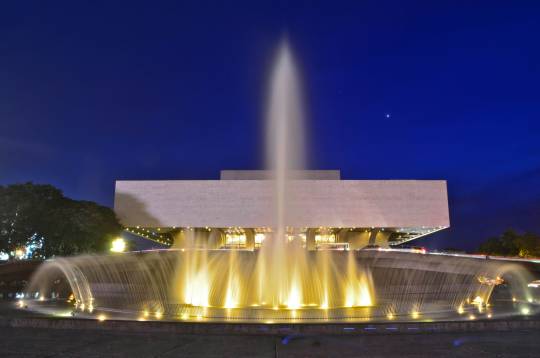
Intramuros: The historic heart of Manila, built during the Spanish colonial period. Visits include Fort Santiago, San Agustin Church, and Casa Manila Museum.
Rizal Park (Luneta): A sprawling park dedicated to José Rizal, hosting the National Museum Complex.
Binondo, The World's Oldest Chinatown: A vibrant neighborhood known for its Chinese-Filipino culture and delicious food.
Manila Ocean Park: An aquarium and marine-themed park offering a variety of activities.
Cultural Center of the Philippines (CCP): Home to Filipino performing arts, hosting concerts, ballets, plays, and art exhibits.
Local Experiences:
Experience the Philippines' iconic jeepney ride for a colorful and affordable way to explore Manila. The city is a shopping paradise, with luxurious malls like SM Mall of Asia and bargain hunting at Divisoria Market and Greenhills Shopping Center. Enjoy local crafts, electronics, and clothes at these popular shopping destinations.
Food & Dining:

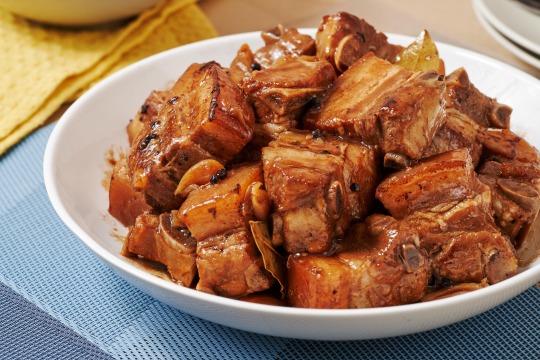

Manila is a hub of Filipino flavors, offering a diverse range of street vendors and fine dining options. Famous dishes include lechon, a traditional pig dish; adobo, a soy-braised chicken or pork dish; and halo-halo, a refreshing dessert made with shaved ice, sweetened fruits, jelly, ube, and leche flan.
Must-Try Restaurants:



Ilustrado Restaurant in Intramuros offers a blend of Spanish, Filipino, and international cuisine, while Barbara's Heritage Restaurant provides a cultural dining experience with traditional Filipino food and folk dance performances. Aristocrat is renowned for its Filipino comfort food.
Day Trips from Manila:



Tagaytay, Pagsanjan Falls, and Corregidor Island: • Tagaytay: 2-hour drive from Manila, offers cooler weather and Taal Volcano views. • Pagsanjan Falls: 3-hour boat ride through river gorge, ending with refreshing waterfall. • Corregidor Island: Historical island off Manila Bay, played a significant role during WWII. Guided tour of ruins, tunnels, and military barracks.
Nightlife:

Manila's nightlife scene is vibrant, particularly in Makati, Bonifacio Global City, and Malate. It offers trendy rooftop bars, live music, and dance clubs. Poblacion, known for its hip vibe, features speakeasies, bars, and clubs. Resorts World Manila, a luxury resort and casino, offers sophisticated dining, theaters, and bars for a sophisticated night out.
Getting Around:



Manila's traffic can be busy, so leave additional time to drive. You can get about using Grab (the taxi service app), jeepneys, buses, or LRT/MRT trains. Local communities also have tricycles and pedicabs accessible for shorter trips.
Cultural Etiquette:

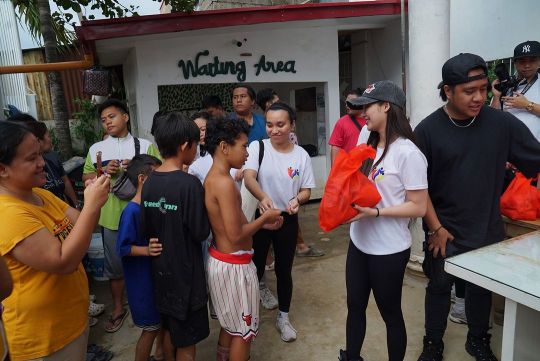
• Mano Po: Traditional respect gesture where younger people place elder's hand on forehead. • Bayanihan Spirit: Filipino hospitality, friendly locals, and helpfulness encouraged.
Shopping:

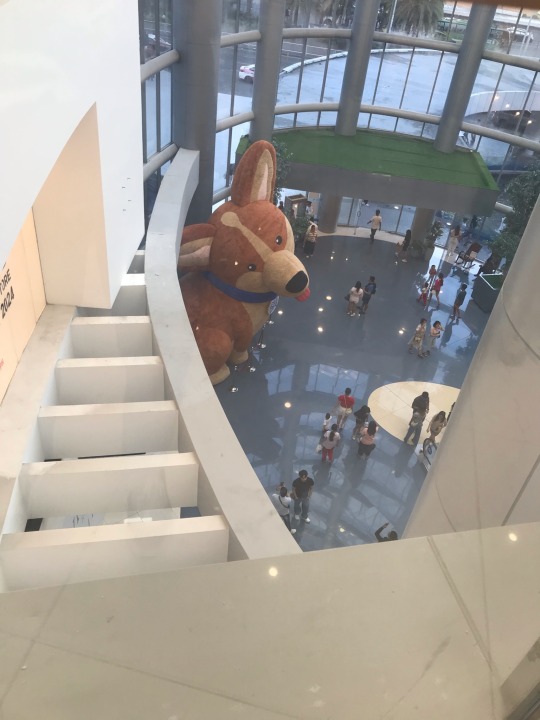
Divisoria is a popular market known for affordable goods, while SM Mall of Asia is a massive mall offering luxury goods, local brands, an ice skating rink, and an IMAX theater.
Conclusion:
With its blend of colonial history, vibrant urban life, and ingrained culture, Manila is a city of contrasts. Whether you're taking in the lively culinary scene or discovering the old-world elegance of Intramuros, Manila provides a diverse and colorful experience that will make for lifelong memories.
10 notes
·
View notes
Text
I do tend to get the basic white people stuff when I go out to eat in restaurants but it's not my fault. It's just that pad Thai and butter chicken and orange chicken and all that are some of the best foods on the planet. I remember this one time I was at a Chinese restaurant with my friends and the owner came out and she was like talking to us and she was like what did you get and My friends answered and she was like oh that's such a good dish and then I answered. I was like I got the general tso's chicken because at that restaurant they do general tso's chicken that slaps you clean in the face. It's so good and she was just like oh. That's very popular. Clearly disdainful but I will not be shamed.
7 notes
·
View notes
Text
16 Black Innovators Who Changed Food Forever
Macaroni and cheese. Ice cream. French fries. Jack Daniel's whisky. Frozen foods in general.
We wouldn't have any of the above foods, plus many others, were it not for Black food innovators and figureheads that have made significant contributions and altered the way we eat and make food today.
Below are just some of the stories of these incredibly talented and inspiring individuals. Some of these names came from research via the New York Times and Food and Wine, but we've also included historical sourcing and context for each person as well. You can click on their names to view those original pieces.
Nathan "Nearest" Green
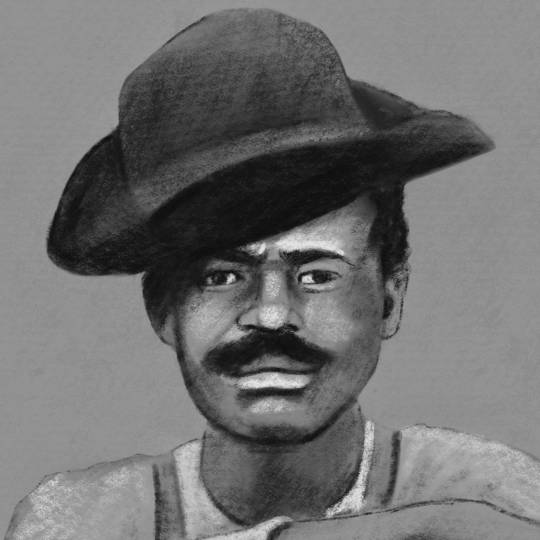
Known as "Uncle Nearest," Nathan Green was a skilled distiller who mastered the "Lincoln County" process. This method of distilling is thought by food historians and whiskey experts alike to have been brought in by slaves, and uses charcoal to filter and purify foods. The "Lincoln County" process, in particular, uses sugar maple charcoal to filter bourbon.
Green trained hired hand Jasper Newton Daniel (known to the world as "Jack Daniel") while working on a priest's distillery in Lynchburg, Tennessee. Daniel eventually made him the first master distiller of Jack Daniel's, the famous Tennessee whisky many people drink today.
While Jack Daniel's shares the story of Green on their website, an all minority-led whisky brand named "Uncle Nearest" continues to build upon his legacy with spirits that use the same distilling technique, but feature Green's name on the bottle.
youtube
While Thomas Jefferson is sometimes credited with bringing foods like mac & cheese and ice cream to the United States, Hemings was the one who actually learned to make them. A slave in the ownership of Jefferson prior to his presidency, Hemings traveled with him to France in 1784 specifically to learn the art of French cuisine.
Hemings became the first American trained as a French chef in history as a result, bringing back several dishes to the United States. French fries, ice cream, macaroni and cheese, creme brulee, French meringues, and French whipped cream are just a few examples. These dishes and others would be incorporated in Hemings' signature half-French, half-Virginian style of cooking he became renowned for.
Hemings would later also cook one of the most famous dinners in American history: the one between Thomas Jefferson and Alexander Hamilton that settled who would pay for the Revolutionary War and established Washington, D.C. as the United States' capital. He eventually was freed by Jefferson in 1796.
Zephyr Wright
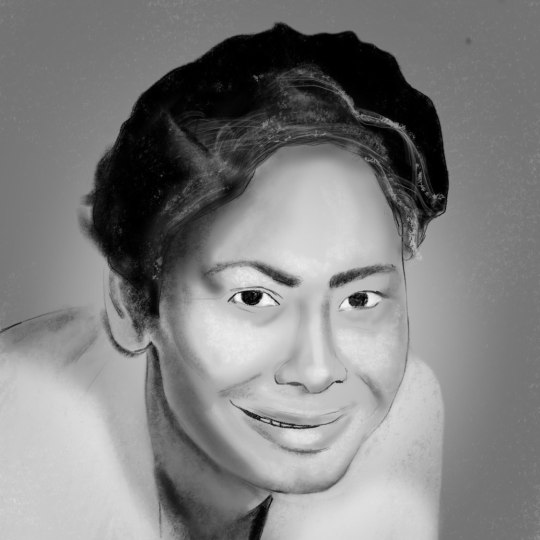
Zephyr Wright was the personal chef for President Lyndon B. Johnson and his family for over twenty years. It was her cooking that made the Johnson household a popular one for D.C. dinner parties.
Wright would follow Johnson to the White House during his tenure, and was in charge of the home cooking in the White House kitchen. She would also temporarily cook all meals, including VIP ones, in between the tenures of two White House Executive Chefs.
Wright is thought to have heavily influenced Johnson's support for the Civil Rights Act of 1964,. Wright was known to have spoken up to the President during his time in Congress about the injustices she faced road tripping between Texas and D.C. during congressional recesses, saying that she was not allowed to use the bathroom in areas she was driving through, and couldn't stop off and eat at restaurants. President Johnson reportedly used some of her stories to convince Congress to sign the bill. He would also give her a White House pen when the act was signed into law.
Leah Chase

The Queen of Creole Cuisine, Leah Chase was the heart and soul of Dooky Chase's restaurant in New Orleans across seven decades. Known for her fried chicken, red beans and rice, gumbo, and other classics, Chase started out in the 1940s when she got a job as a server at a restaurant. She eventually took over the helm and made it a safe haven for anyone to come and eat at.
Dooky Chase's was known as one of the few places that it was publicly okay for races to mix at, since the cops wouldn't bother activists inside the restaurant. Thus, leaders of the Civil Rights Movement, including local leaders and national ones like Martin Luther King Jr., would often strategize while eating there.
Chase would go on to serve presidents like Barack Obama and George W. Bush, along with Associate Supreme Court Justice Thurgood Marshall and other influential figures. Disney has even made a movie with a character inspired by her: Princess Tiana of Princess and the Frog.
Abby Fisher
Around the early 1880s, Abby Fisher was known for her award-winning pickles and the Mrs. Abby Fisher Pickle Company in San Francisco. She had at least 35 years of cooking experience, some estimates had it, and the awards she won for her food reflected that.
However, Fisher is probably best known for publishing one of the first cookbooks ever authored by an African-American woman. The book, called What Mrs. Fisher Knows About Old Southern Cooking, contains over 160 recipes and uses the dictated words of Fisher herself.
The cookbook surged in popularity in the late 20th century when a publisher began reprinting it in 1995. Today, it offers a window into these early recipes that places like museums try to recreate for guests to sample.
Edna Lewis

Edna Lewis became a legend while she cooked at Cafe Nicholson in Midtown Manhattan starting in 1949. Her fame and Southern recipes led to guests like Marlon Brando, Eleanor Roosevelt, and Salvador Dali showing up for dinner. After stepping away from the chef's role (as an active partner) in 1952, she would lecture at the American Museum of Natural History while working as a chef and private caterer.
Lewis would later become inspired to write her first cookbook as demand for them grew in 1972. She was one of the first African-American women from the South that would publish a cookbook that did not hide her name, gender, or race. She would go on to publish more in the future, eventually becoming known as the Grand Dame and Grand Doyenne of Southern cooking.
Larry James and Jereline Bethune
The Bethune family, to this day, runs Brenda's Bar-Be-Que Pit in Montgomery, Alabama. Open since 1942, the restaurant would become an important hub for those in the Civil Rights Movement.
After Rosa Parks infamously refused to give up her seat on a Montgomery bus, Larry James and Jereline Bethune were instrumental in using their restaurant to organize bus boycott efforts around the city. As the movement continued and literacy test laws (meant to curtail the Black vote) were introduced, Jereline would also quietly hold lessons teaching other African-Americans how to read. They were then able to pass these literacy tests and go out and vote.
Alfred L. Cralle
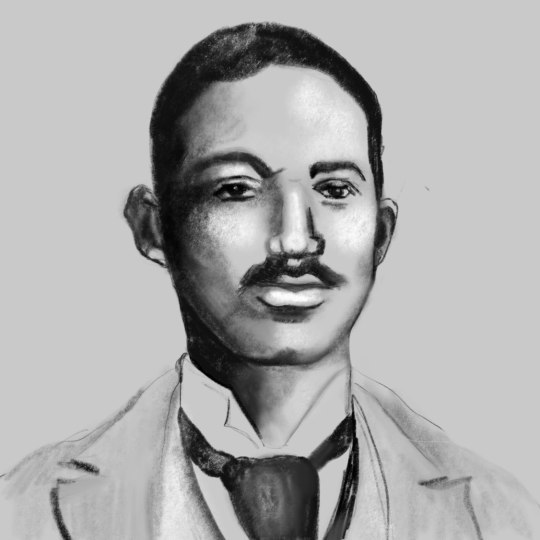
Ice cream today would not be the same without the work of Alfred Cralle. Born just after the Civil War, he had an affinity for mechanics as a young age, and would go study at Wayland Seminary, a school set up after the Civil War to educate newly freed African-Americans.
Cralle would go on to work as a porter at a drugstore and a hotel in Philadelphia, and developed the idea of the ice cream scoop while watching people struggle using two different spoons to get the ice cream into cones. Cralle's mechanical inventional, which is the basis of how ice cream scoops work to this day, was invented in 1897.
Cralle would also become a successful promoter of businesses in Philly, and was the assistant manager of the Afro-American Financial, Accumulating, Merchandise, and Business Association in Pittsburgh.
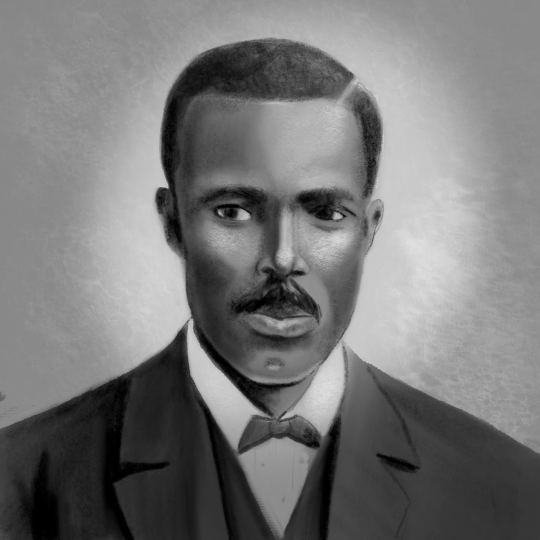
Ever heard the story of how potato chips were invented to spite a customer at a restaurant? George Crum was the chef at said restaurant, the Moon Lake Lodge resort in Saratoga Springs. A customer came in around the summer of 1853 wanting extra-thin French Fries, frustrating Crum to the point he sliced them as thin as possible, fried them in grease, and sent them out.
The chips became a big hit, eventually becoming known as "Saratoga Chips." While Crum never patented the dish, he did open his own restaurant, "Crumbs House," that served a basket of them at every table.
Chips wouldn't become a grocery product until 1895, and the concept of bagged chips didn't show up until 1926.

Joseph Lee was one of the most influential people when it came to industrializing the way we make bread.
Having worked in a bakery from a young age, Lee eventually became the owner of two restaurants in Boston, as well as a hotel and a catering company. Looking to find a way to minimize bread waste, he eventually invented a machine that would convert day-old bread into breadcrumbs. Patented in 1895, he later sold the rights and the breadcrumb maker would spread across the world.
That wasn't Lee's only invention, however. He would later patent the idea for an automatic bread maker that mixed and kneaded the dough, the basis to the same devices (think, stand mixers) that we still use in our kitchens today.
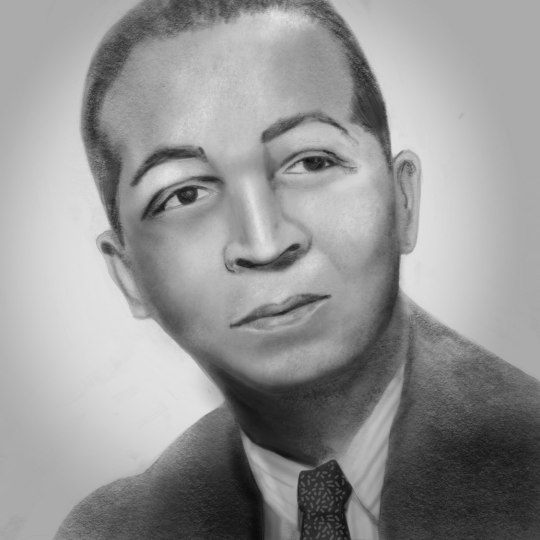
Lloyd Hall is considered to be one of the pioneers in the world of food chemistry. A pharmaceutical chemist for Griffith Laboratories in Chicago who completed graduate school, Hall would be awarded over 100 patents and received multiple honorary doctorate degrees for his work.
Hall's main area of work came around the development of techniques to preserve food. Some of his most revolutionary patents included using "flash-dried" salt crystals that revolutionized meatpacking. He also introduced the use of antioxidants to prevent the spoilage of fats and oils in baked goods, and developed a process known as "Ethylene Oxide Vacugas," which could control the growth of bacteria and molds in food.
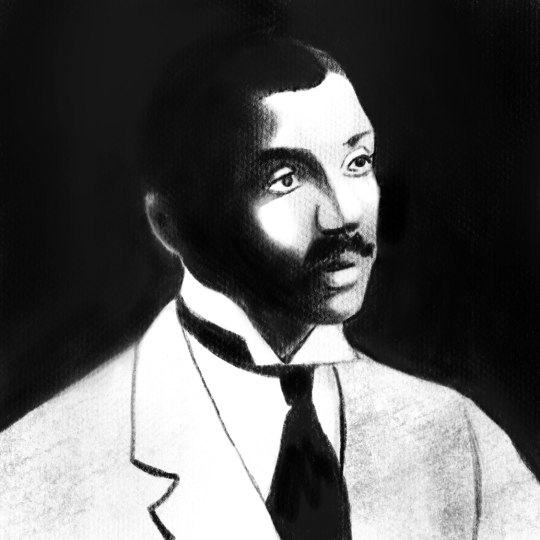
John Standard was an inventor instrumental in modernizing two pieces of kitchen equipment that virtually every household has today: stoves and refrigerators.
Refrigeration was a concept that was being researched as early as the 1830s, but mainly focused on using some sort of power. Standard's improvement to the fridge, patented in 1891, was an unpowered design that used a manually filled ice chamber as the central cooling unit.
Standard also made significant upgrades to the oil-powered stove, patenting one with a space-saving design in 1889 that could be used in applications like buffet-style meals on trains.

If you've worked in the food industry or any commercial transportation that required keeping stuff cold, you've likely seen the Thermo King brand somewhere in your lifetime. Frederick McKinley Jones was the founder of that company, and inventor of the first automated refrigerated system for trucks.
A skilled and gifted electrician and mechanic, Jones had patents for sixty different inventions across a wide variety of fields, including the portable X-ray machine, motion picture devices, and even medical storage units.
He's most known for the Thermo King, the refrigerated system he invented, because it allowed for fresh goods from around the world to be transported and sold in stores. Jones is essentially responsible for not just all refrigerated transport globally, but also the entire frozen food industry.

Known as the "Oyster King of New York," Downing was most known for his 19th-century restaurant, Thomas Downing's Oyster House. His oyster hall was legendary, with prominent figures like Queen Victoria and Charles Dickens having dined there.
Downing was born a free man, as his parents were freed by plantation owner John Downing. He grew up and was educated on Chincoteague Island in Virginia, and eventually made his way up to New York following the war of 1812. Like many other African-Americans in New York, Downing eventually went into the oyster business, opening his own oyster cellar in the 1820s.
Oyster cellars were the universal food of New York at the time (similar to hot dogs today), but many establishments weren't as trusted as Downing's. That's because he specifically catering it towards the fine dining clientele, with a large dining area, carpet, and chandeliers gracing the hall. Elaborate dishes like oyster-stuffed turkeys and a pan roast made with wine and chili graced the menu.
This, at the time, meant that African-Americans couldn't eat Downing's restaurant, but few were aware of the double life he led. Downing's basement was a key stop in the Underground Railroad, and as an abolitionist, he helped many that were escaping the South in search of freedom. He also led political efforts, funding schools for African-American children and leading the fight in desegregating New York's trolley system.
Downing was so regarded in New York that when he passed away in 1866, the New York City Chamber of Commerce closed so that its members could attend his funeral.

The sugar industry in the United States has Norbert Rillieux to thank for allowing them to become so powerful. Were it not for his inventions, making sugar would still be a time-consuming and dangerous process.
Originally, the sugar refinement process, known as "The Jamaica Train," was dangerous and expensive. Laborers (usually slaves) would transfer ladles of scalding hot sugar case juice between open boiling kettles, often resulting in scalding and terrible burns (anyone who's worked with sugar knows how painful it can be). The result was a dark syrup that was molded into cones and dried before being sold.
From 1834-1843, Rillieux developed a system for refining and crystallizing sugar using a much safer and controlled method, allowing the United States to eventually dominate the sugar market. His process is still used today for freeze-drying food, pigments, and other food products.

Many people know George Washington Carver for the myriad of products he invented that utilized peanuts or sweet potatoes. As an agricultural scientist working in the South, he was also a man responsible for helping revitalize much of the economy in that region.
Working out of the Tuskegee Institute in Alabama, Carver was a teacher and a researcher from the late 1890s until his passing in 1943. An early pioneer of crop rotation, he encouraged farmers to plant peanuts in the soil after harvest to replenish lost nutrients, helping farmers improve not just their livelihoods, but their diets as well.
Carver's research and work focused on revitalizing soil and maximizing plant production while keeping costs to a minimum. Outside of agriculture, he was a massive promoter of racial equality, and massive advocate of peanut oil as a potential treatment for polio. While never proven, the claim was widely circulated in media, and eventually turned into a "Peanuts for Polio" fundraising effort that helped raise money for medical care and benefits for children affected with the disease.
Following Carver's passing, then-Senator Harry S. Truman sponsored legislation that would lead to the construction of the George Washington Carver National Monument. It was the first-ever national memorial to an African-American.
#16 Black Innovators Who Changed Food Forever#Black Food#Black Food Innovaters#Food#Black Food Science#Black History#Black LIves Matter#Youtube
24 notes
·
View notes
Text
Ossan's Love Returns Ep 4 Stray Thoughts
Last time, Kurosawa committed to his role of mother-in-law and immediately ran into a scare that both Haruta and Maki were having affairs, Haruta with Izumi and Maki with Takegawa. Takegawa is worried about aging alone, and took his final shot with Maki. Izumi randomly kissed Haruta, so Kurosawa used his cleaning job to get a peak inside their house. However, because he is a professional, he did not open the forbidden doors to see the money and guns. We had an incredibly emotional scene where Kurosawa expressed how he's tied his happiness to the boys', who when had a necessary conversation that featured the cotton candy from the movie (shout-out to @twig-tea for pointing that out). We left at Haruta noticing his picture in Izumi's locket.
If this Akito is a dead doppelganger...
It is so important to me that Haruta and Maki are flirting over the dishes as they talk about upcoming events in their lives. So glad Haruta is stepping up his household chores participation like he said he would.
OG fans have earned a cute shopping date for Haruta and Maki after all these years.
Choko runs this dojo! Good for her! I love the way she treats Izumi. I hope I don't have to nate him.
THEY'RE AT A RESTAURANT CALLED MOONLIGHT CHICKEN. THIS IS NOT A FUCKING DRILL.
EARTH AND MIX!!!!!
Like, this is actually a huge deal that Moonlight Chicken is here. This is TV Asahi acknowledging how popular that must have been, and MLC is more of a gay family drama than a BL, not unlike Ossan's Love.
I also love the idea that Jim and Wen went to Japan after Li Ming moved to America. Jim and Wen could have witnessed a DISPATCH 👍 moment.
Maki speaking Thai feels like a really huge acknowledgement of Thai contributions to the genre.
Episode 4: I Can't Go Home Until I Wipe Your Butt
I'm so excited to see Haruta have to fill this role because Maki is unavailable.
It's so restorative to see Maki and Haruta so comfortable with kissing that they tease about it now.
There right, Kurosawa, stay suspicious.
Now this Kuki dude is receiving ominous coded messages. WTF.
Okay, I like Kurosawa hesitating and looking around. I'll let him take a bite behind Haruta. He's doing his best. He can have this.
Takegawa really went on this dating show. Amazing.
Ope! Name is the episode! Finish your drinks!
Well, they are cops, and this is tragic.
I love that none of them have taken Kiku's bribes.
I'm glad Izumi's advice worked out and Papa Maki opened up a bit. Haruta is so open with his feelings that he'll say plainly that he's excited to gain a dad even as they tease Ryota a little bit.
CHIEF!!!!
Only Haruta would cheer about being able to wipe someone else's shit.
I really like the pacing of this softening between Maki and Kurosawa. I love how the professional relationships of the first season are all maturing into something more.
Oh damn next episode looks dramatic.
This show continues to be excellent. I'm so sorry that I've only recently come to this series. I could have had this in my heart alongside WDYEY for years. This new season is so gentle to us. They give us so much physical intimacy and domesticity between Maki and Haruta. They really feel like they're building a home together.
21 notes
·
View notes